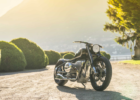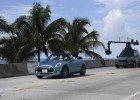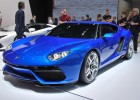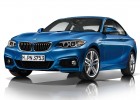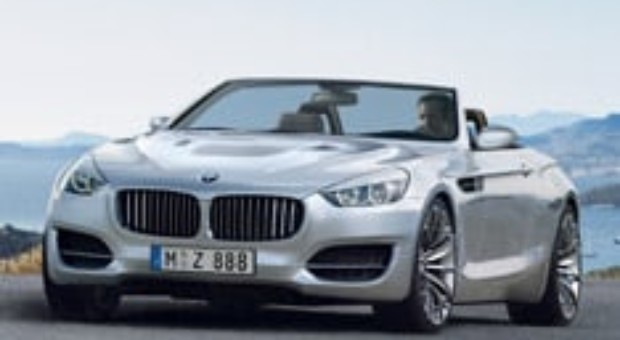
The spectacular 507 roadster, built during 1956-59 in only 253 examples, is considered by many enthusiasts and collectors to be one of the most beautiful cars ever built.
In developing the Z8, BMW designers were challenged to imagine what the original 507 would be like if it had never ceased production and had evolved over four decades. The result of this creative direction is a thoroughly contemporary interpretation of that famous and coveted roadster – a car that is truly a perfect blend of performance and sensuality; of modern technology and classic elegance.
The world’s first look at the Z8 concept was the Z07 design study displayed at the 1997 Tokyo Auto Show and shortly thereafter at the1998 North American International Auto Show in Detroit. Again encouraged by favorable public reaction, BMW decided to build the Z8 in limited numbers.
BMW 507 designer Count Albrecht Goertz has paid the Z8 the ultimate compliment: “If I were to design the 507 today, it would look like the Z8.” Vastly different from the esthetic of current exclusive high-performance cars, the front-engine, rear-wheel-drive sports car features a long hood, tapered overhangs, a cockpit positioned toward the rear, and a low beltline.
The front-fender air vents or “gills,” here with integrated fiber-optic turn signal lights, are a design element usually associated with the classic 507 even though the concept dates from earlier BMWs. In a world of sharp-edged, angular sports cars, the Z8 is romantically curvaceous.
The roadster’s advanced lighting technology includes Xenon lowbeam headlights with dynamic auto-leveling and, concealed in the leading edges of the headlamp covers, high-intensity washers.
The Z8 is the first car ever with neon turn signals and brake lights that illuminate ten times faster than conventional bulbs, giving other drivers more time to react. Another example of the attention to detail the designers lavished on the Z8 is the two round red lenses bracketing the rear license plate.
The left one is a rear foglight; the right one is a backup light that, despite its red lens, illuminates white for reversing.
Building the Z8 in Germany is as unique a process as is the car itself. Z8 bodies are constructed and painted at BMW’s Dingolfing plant, approximately 60 miles northeast of Munich; the front and rear bumpers are manufactured at the nearby Landshut facility. Completed bodies are then shipped to the former pilot-plant area of the company’s Munich factory for final assembly. There, a small team of highly skilled craftspeople largely hand-build Z8s in 31 assembly steps.
The complete construction and finishing process takes about 10 times as long as that for a 3 Series sedan.
The Z8 cockpit continues the theme of a modern re-creation of the 507. Thus in the tradition of great sports cars, the Z8 has a pushbutton starter for its engine. The ignition switch is mounted on the dash, just above the starter button instead of in the traditional steering-column location.
A new electronic steering lock, along with BMW’s Coded Driveaway Protection, helps deter theft.
Other standard equipment includes heated leather seats, a power roadster top and a removable aluminum hardtop with heated rear window. The extensive Nappa leather upholstery and trim is accented with body-color painted surfaces and aluminum control knobs, all connoting –5 –more– astounding attention to detail. Interior trim consists of aluminum and colorkeyed painted surfaces; among the few changes for ’02 are new choices for combining trim colors with the four available upholstery schemes.
There was never any question about what engine should power the Z8. The 3.2-liter aluminum V8 that powered the original 507 was, at the time, BMW’s most powerful engine. For a car that personifies BMW’s passion for driving, only the most powerful road engine in BMW history, the S62 5-liter V-8 – also found in the M5 sedan – would do. Delivering 394 horsepower and 368 lb-ft. of torque, the Z8’s aluminum engine is completely civilized in traffic and around town, thanks in part to its infinitely adjustable, electronically controlled valve-timing system.
Called High-Pressure Double VANOS 1, the system varies valve timing on the intake and exhaust valves of both cylinder heads – thus on all four camshafts – helping optimize power, torque and emission control.
The “high-pressure” designation signifies the fact that this engine, like other BMW M engines but distinct from regular production BMW powerplants, includes a dedicated oil pump for the VANOS system. The engine’s “drive-by-wire” throttle system operates eight individual intake throttles and includes M Driving Dynamics Control, which allows the driver to select between Normal and quicker Sport response characteristics. A unique g-sensitive engine-lubrication system automatically ensures proper oil circulation in hard cornering situations.
Because a V-8 engine’s cylinder heads are canted at a 45° angle, there could be insufficient natural oil flow out of the heads under extreme cornering loads.
In addition to the usual pressure pump, there are two scavenging pumps, one for each cylinder bank. In straight-ahead driving, these pumps pick up oil from the rear of the 1 – VANOS = VAriable NOckenwellen Steuerung = variable camshaft control, or variable valve timing. –6 –more– engine and return it to the sump. In hard cornering (0.9g or more), the Dynamic Stability Control system’s lateral-g sensor switches magnetic valves to different pickup points, at the curve-outer side of each head and the pan.
The original 507’s body was aluminum.
Taking up that tradition in a 21st-century form, all the Z8’s body panels, except its bumpers and door hinges, are aluminum. Here BMW has taken the use of this lightweight alloy a step further and designed an entire space frame in aluminum. This concept combines moderate weight with body rigidity that is unparalleled by any other open sports car in this category.
The monocoque frame is made of extrusion-pressed beams much like the trusses of a timber house. Nearly 1,000 rivets and 190 ft. of fused welding seam (MIG) hold the frame and body panels together. The frame is made largely in-house at BMW’s Dingolfing plant, where the existing aluminum processing center also makes the 3 Series convertible hardtop, M3 hood and 7 Series hood and front fenders.
The space frame, which is 30 percent lighter than if it were made of steel, provides exceptional torsional rigidity to eliminate most of the body or –7 –more– “cowl” shake usually associated with an open-top car: “The chassis is rigid enough,” commented Car and Driver in April 2001, “to harness [the engine’s] thrust without any creaks or groans.”
This also provides an extremely stable platform for precise suspension tuning, and contributes to excellent driver feedback. The central frame’s stiffness also allows much lower side sills than is normally the case for a roadster. Pairs of unique aluminum “Y” arms that connect the Z8’s front and rear sections to its space frame provide much of the torsional rigidity and accident protection.
In a crash, the arms are designed to crumple, absorbing energy and transferring forces to the sturdy center floor pan. In simulations of the rigorous European Union’s 40-mph offset crash test, the Z8’s passenger cell remained completely intact. “Smart” 2-stage airbags, safety belts with force limiters and automatic tensioners, twin Rollover Protection hoops behind the seats, and a reinforced windshield frame provide additional protection.
BMW Z8 Trailer presentation
BMW Z8 Trailer from Matthias Deuschle on Vimeo.
BMW Z8 Road Test Review
Karbon TV – BMW Z8 Road Test from Terence Jenkins on Vimeo.
Source: BMW Press Release



